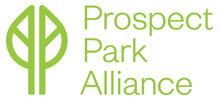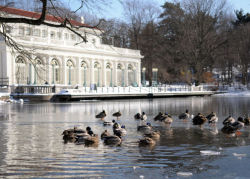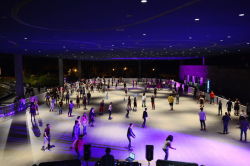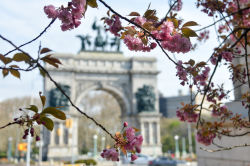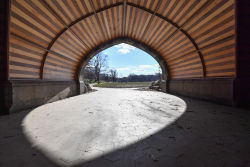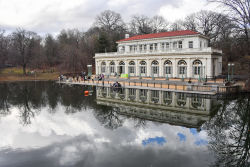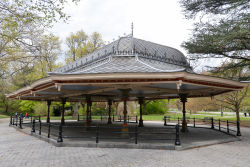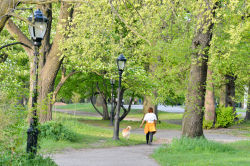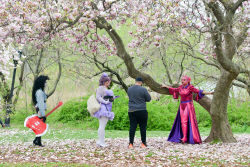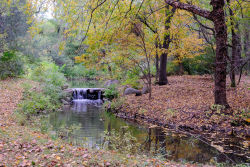Prospect Park
View all monuments in NYC Parks, as well as temporary public art installations on our NYC Public Art Map and Guide.
Panthers
| Artist: | Alexander Phimister Proctor |
| Dedicated: | 1898 |
| Location: | Third Street entrance |
Artwork History
When President Theodore Roosevelt (1858–1919) left office in 1909, his cabinet presented him with Alexander Phimister Proctor’s sculpture Stalking Panther (1894). Proctor (1860–1950), an eminent sculptor of animal and American Western themes, came to prominence in 1893 when thirty-five of his sculptures were displayed at the World Columbian Exposition in Chicago.
In Chicago, Proctor met the esteemed New York sculptor Augustus Saint-Gaudens (1848–1907), who later advised the younger artist as he executed his first monumental work, two equestrian statues of Native Americans, which he were exhibited at the Exposition. Proctor later returned the favor by helping Saint-Gaudens model the horse for his gilded sculpture of General Sherman, unveiled in 1903 in Manhattan’s Grand Army Plaza. Other examples of work by this animalier (a sculptor of animals) include the ornamental animal pieces that adorn the Bronx and Prospect Park Zoo buildings, the latter commissioned as a part of a federal Works Progress Administration program from the 1930s.
The bronze Panthers (sometimes also referred to as Pumas) that stand sentinel at the Third Street entrance to Prospect Park were cast while Proctor was studying at the Academie Julien in Paris on a Rinehart Fellowship (1896–99). Proctor’s Panthers were installed in 1898 atop a pair of Indiana limestone pedestals designed by Stanford White (1853–1906), the prolific architect who also designed the Washington Square Arch, the original Madison Square Garden, and Prospect Park’s Maryland Memorial.
Although the Panthers appear very similar at first glance, they are distinguishable from each other, particularly by their stances and the inclination of their ears. The full-size model for the north panther was first displayed at the entrance to the Paris Exposition in 1900.
Not part of the original plan for Prospect Park, the Panthers were added when the perimeter of the park was transformed at the end of the 19th century with the introduction of monumental neoclassical gateways and shelters of varying size and purpose. Frederick MacMonnies’s Horse Tamers (1898) and John Duncan’s Soldiers’ and Sailors’ Memorial Arch (1892) were erected along with the Panthers in this era of the park’s evolution.
In 1998 the Panthers were conserved by the City Parks Foundation Monuments Conservation Program. Contemporary photographs and a small model of the sculpture in the Brooklyn Museum were consulted to reestablish the Panthers’ original patina. The treatment included cleaning, repatining, and an application of a protective coating to the sculptures, as well as cleaning and repair of the pedestals. The project was funded in part by the Florence Gould Foundation, the American Express Company, and the Samuel H. Kress Foundation.
Artwork Details
| Description: | Two striding panthers on integral plinths, each on its own pedestal, framing the pedestrian entranceway |
| Materials: | Bronze, Indiana limestone |
| Dimensions: | Overall H: 18' W: 6'8" D: 9' |
| Foundry: | Thiebaut Freres, Paris |
| Donor: | City of Brooklyn. |
| Cast: | 1898 |
Please note, the NAME field includes a primary designation as well as alternate namingsoften in common or popular usage. The DEDICATED field refers to the most recent dedication, most often, butnot necessarily the original dedication date. If the monument did not have a formal dedication, the yearlisted reflects the date of installation.
For more information, please contact Art & Antiquities at (212) 360-8163.
Check out your park's Vital Signs
Clean & Safe
Green & Resilient
Empowered & Engaged Users
Share your feedback or learn more about how this park is part of a
Vital Park System




